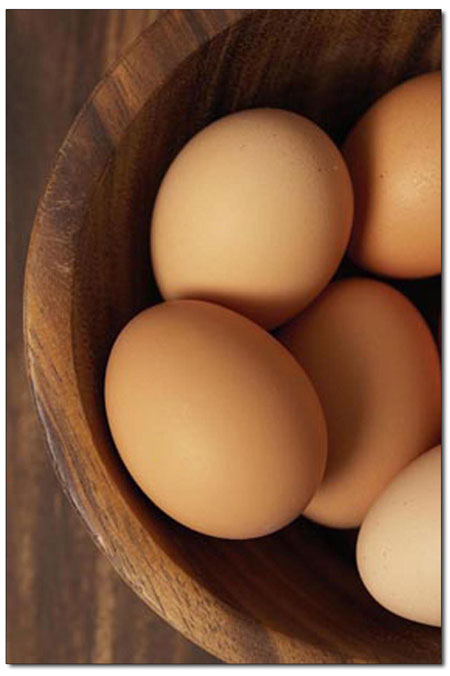|
|
Putting the chicken before the eggby Ari LeVaux In the industrial egg factories where most of America’s eggs are laid, the newly introduced Egg Products Inspection Act would, if passed, make life easier. The bill grew from a compromise between United Egg Producers and the Humane Society of the United States. It would mandate replacing the nation’s 280 million chicken-sized battery cages, as they’re called, with group cages equipped with amenities like dust baths and perches, while banning some of the cruelest practices associated with egg farming. While bonds may be loosening for the jailed birds on life’s lowest perches, the ranks of the privileged few are growing. Chicken society’s one-percenters, the personal flocks of subsistence and hobby chicken farmers, have reached a size that actually resembles a percentage point. And now, finally, the scattered tribes of backyard flocksters have a bible to call their own: The Small-Scale Poultry Flock by Harvey Ussery, with a forward by his colleague, the outspoken chicken farmer Joel Salatin. The exact, or even approximate, number of flocksters (Ussery’s term) in America is not known. “I’ve looked for some government census type info for years, but apparently backyard poultry enthusiasts fly under their radar,” Backyard Poultry editor Elaine Belanger told me. For what it’s worth, she offered, the magazine’s circulation has quadrupled to 80,000 in the last four years. A representative from Murray McMurray Hatchery, the go-to chick supplier for many hobbyists and small farmers, told me via email they ship 1.7 million baby chicks per year. “Seventy to eighty percent of those would be egg-laying,” said the rep, who didn’t know his company’s market share. The Small-Scale Poultry Flock is oriented toward an ideal integration of flock and homestead, to whatever degree context allows – be it a two-hen Brooklyn roost or Ussery’s spread in the boondocks of Virginia. The essence of chicken farming is working with what you’ve got, and Ussery makes the point gracefully, dropping practical knowledge on every page. Whether you feed your girls purchased mix, homegrown grain, collected acorns or crème brulée, the eggs will grossly surpass any store-bought version. And Ussery has a lot to teach about accessible ways to improve your birds’ nutrition. I may not need to know how to grow amaranth or other chicken feeds, but Ussery’s information on soaking and sprouting grains, especially in winter to provide extra sustenance when foraging is slow, got my wheels turning. Ussery’s discussion of proper scalding technique helped explain why my last plucking attempt was a disaster. And I didn’t know that those plucked feathers, being a great source of protein, can be tossed back in the coop as feed (I’ve been using the feathers as a garden fertilizer, which also works, since protein equals nitrogen). And if you’re one of those flocksters who toasts and grinds your cracked eggshells before feeding them back to the chickens (to replenish their calcium), Ussery says you’re wasting time. “Just crush coarsely by hand and toss them out.” The Small-Scale Poultry Flock also provides valuable insight into how the other 99 percent lives, which will help you understand how much the Egg Products Inspection Act will do for the egg slaves. The book includes, for example, a discussion of the production-boosting practice of forced molting, which the new legislation would ban. “...the birds are starved for a period ranging from five to 21 days, either by complete withholding of food or sometimes the feeding of nutritionally deficient feeds – water may be withheld for briefer periods as well – together with light manipulation and feeding of drugs, hormones and metals such as dietary aluminum and zinc.” It’s common for hen body weight to drop by 25 to 35 percent, he explains, as all the trauma of winter is packed into a few days in order to reset the laying cycle. If passed, the bill would mandate that all egg cartons be labeled as “cage-free,” “free-range,” “enhanced cages” or “caged.” The “caged” option would be eliminated over an 18-year phase-in period. This would be the first instance of production practices being raised to the status of ingredients: information you have a legal right to know. Not surprisingly, other livestock producers are calling fowl on the poultry legislation. Kristina Butts, director of the National Cattlemen’s Beef Association, said in a public comment, “currently there’s no production practices in federal statute (sic) and we want to keep it that way.” The reason United Egg Producers agreed to help draft this bill is that they were losing, state by state, in referendums on the issue. The terms differed with each loss, threatening to make interstate egg commerce way too complicated. UEP didn’t want to deal with 50 different state mandates. If the compromise fails, the battle returns to the states, where it favors the chickens. Humane Society spokesman Josh Balk told me last July that while the deal doesn’t raise the quality-of-life bar as high as he and others would like, similar laws recently passed in Europe have encouraged producers to exceed baseline conditions. “There’s a thriving cage-free market, even though the new EU laws don’t require cage-free housing systems,” he said. “More than half the eggs in the U.K. are from cage-free hens.” While both cage size and backyard poultry enthusiasm are on the rise, chicken society remains far from perfect. Those at the top are a minority, and a middle class is practically nonexistent. But like a Ronald Reagan economic fantasy, the working-class chickens are doing better, and the elite class is growing. This is good for the hens whose ovulations put breakfast on the table. And it’s good for egg eaters, because as any flockster will attest, when the chicken comes first, good eggs will follow. |


